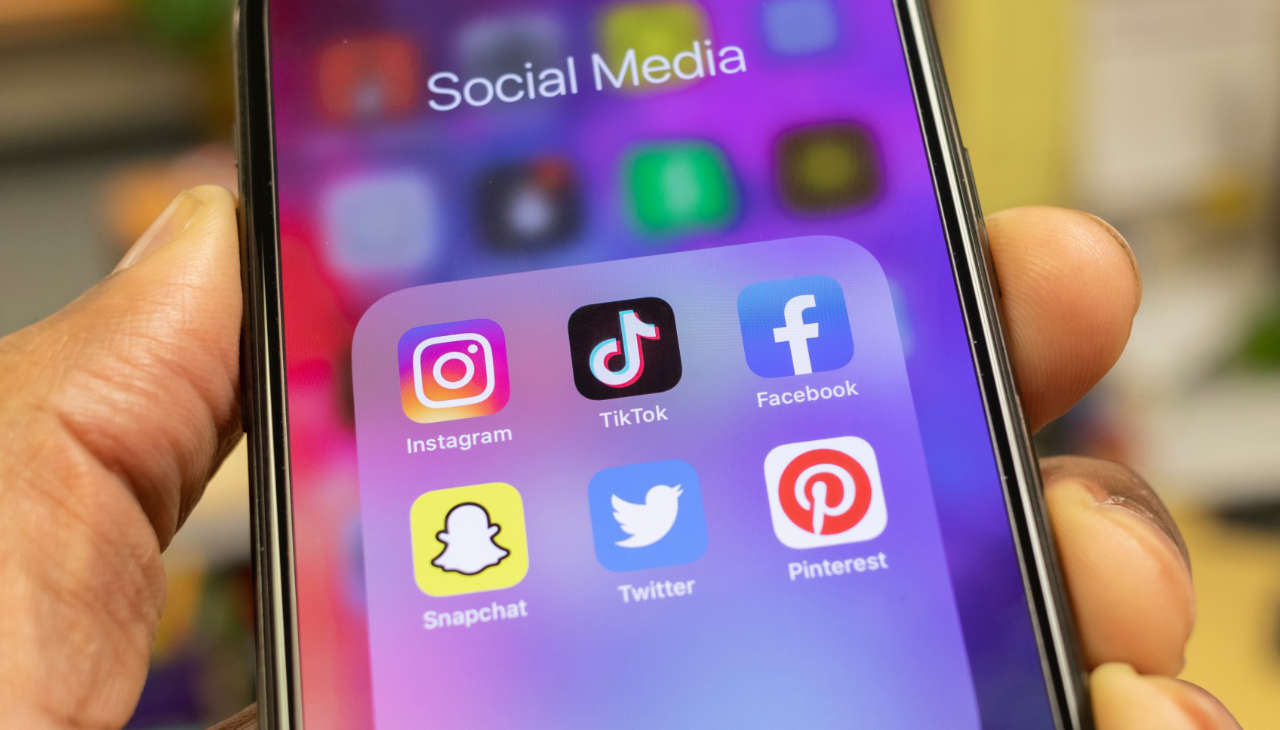
The key ingredient for doing social media marketing well as a strategy. Without a strategy, you might be posting on social media platforms for the sake of posting. Without understanding what your goals are, who your target audience is, and what they want, it'll be hard to achieve results on social media. Whether you want to grow your brand through social media or to level up as a social media marketer, developing a social media marketing strategy is essential. In this article, we'll share social media tips for business and provide a unique social media strategy for each platform.
Social Media Marketing by Platform
Social Media Marketing by Platform
Every platform is unique and has its own features. While there are some overlapping features on different platforms, it's important to get accustomed to the features and audiences on the specific platform you're using. Here are social media tips for each platform:
Facebook
Facebook still reigns as one of the most widely used online platforms by adults. And the vast majority are using it daily, which continues to provide brands and businesses with an opportunity for maximum visibility when implementing a Facebook marketing strategy. Oftentimes, the toughest part is simply getting started, but we're here to provide you with tips to help get your Facebook marketing efforts off the ground. Here are social media marketing tips for Facebook:
Know Your Facebook Audience
Know Your Facebook Audience
Understanding who is on Facebook and what your current audience breakdown looks like will be important in determining which Facebook marketing strategies you should employ and how. Once you've studied up on that, spend some time getting familiar with your own Facebook demographics using Facebook Page Insights or a tool like Sprout.
Use Facebook Video Post
Use Facebook Video Post
Video posts see even higher engagement rates than photo posts do. Whether it's for a short-and-sweet video announcement or a longer, artfully shot vid with a narrative, video can be incredibly compelling. On Facebook, video plays automatically in the news feed, so you're all but guaranteed to catch users' attention. It's the perfect trap!
Use Facebook Stories
Use Facebook Stories
Just like Instagram Stories, Facebook Stories are photo or short video posts in a vertical format that disappear after 24 hours. Photos appear for five seconds, and videos can be up to 20 seconds long. Facebook Stories live at the top of the News Feed — which means they're immune to the Facebook algorithm. This might be why more than half a billion people view Facebook Stories every day.
Consider Linked Content Post
Consider Linked Content Post
A link post is a post that shares a URL with your followers. Just paste a link into the composition box, and a preview of the website will automatically preview. You could share a link to your website, but you could also share content from other sources — like an interesting think piece about your industry. Whatever the content, make sure to add a few words of your own to the post before you click Publish to give your readers some context or a takeaway. Also, link posts get more engagement than plain text posts but considerably less than photos or videos.

Instagram
Instagram is perhaps the best visual platform out there. Here are social media marketing tips for Instagram:
Post more Instagram Stories
Post more Instagram Stories
Since Instagram regularly changes the way posts interact with its algorithm, it can be difficult to predict if your posts will generate significant engagement. One way to make sure that you stay in front of your followers on Instagram is to post Stories consistently. Instagram Stories are chronological. Every time you post a story, your followers see your account at the top of their feed and know that you have a new story up. You can use Stories to bring attention to what you're posting on your newsfeed to make sure people see it. If you have more than 10,000 followers, then you'll also be able to include links within your stories. You can use these links to drive traffic to blog posts, your website, or any other web page you want to share.
Utilize IGTV
Utilize IGTV
While you might not have time to create original content on yet another platform, IGTV is a great way to reuse your existing videos and redistribute them on a new platform. If you find yourself creating lengthy IG Stories for your brand, then you might benefit from creating longer-form versions of your Stories for IGTV. Content types that work well on IGTV include tutorials, listicles, and behind-the-scenes videos. Buzzfeed is a great example of a company that has capitalized on IGTV. They regularly create engaging content that complements their Instagram posts as well as the content they post on their website.
Twitter
Whether you're just starting out with a fresh Twitter account or have been tasked with growing an account for an established brand, it's never a bad idea to learn some new tips and tactics to set yourself up for success. Here are social media marketing tips for Twitter:
Join the conversation
Join the conversation
Using Twitter is still one of the easiest ways to engage with people in your industry, regardless of whether or not they follow you. It allows you to join in on trending conversations and get your message in front of people who are interested in your niche but aren't yet aware of your brand. Twitter also allows you to establish yourself as a thought leader in your industry by contributing valuable insight into topics that people are already talking about.
Use hashtags appropriately
Use hashtags appropriately
We just talked about how critical it is to join the conversation on Twitter, but it's just as important to make sure the conversation is relevant to you. Many brands try to stay top of mind by joining in on every trending topic, despite whether it's relevant to their brand or not. This is not a great strategy to follow and will lead to a reduced focus on your core brand message. Maintaining the focus of your message and don't dilute your brand and message by jumping on every topic you see. Instead, focus on your own branded hashtags and participating in trends that matter to your audience and that you can add actual value to a discussion.
Experiment with Twitter advertising
Experiment with Twitter advertising
If you know your audience is active on Twitter, paid social media advertising can be an effective way to get your message in front of the right people. Twitter has three ways to advertise your content: Promoted Tweets, Promoted Accounts, and Promoted Trends. No matter which strategy you choose, Twitter advertising can be especially effective since it's not disruptive and looks very similar to the organic social media content your audience is already scrolling through.
Linkedin
LinkedIn is a growing platform and is the hub for marketing to business professionals. Here are ways to maximize your brand's social media strategy for this platform: Here are social media marketing tips for LinkedIn:
Prioritize video content
Prioritize video content
Content creators have a huge opportunity to find an audience on LinkedIn and capitalize on the fact that Linkedin, like Facebook, rewards users who post videos directly to the platform. There are a few things to keep in mind before publishing videos on LinkedIn. About 85% of social media users play videos without sound. So it's important to account for that in your video by including descriptive images and closed captions on your video. Closed captioning makes your video more accessible to all viewers. LinkedIn even has its own closed captioning feature built into its platform.
LinkedIn also has some recommendations on optimizing the length of your videos for maximum reach. They recommend keeping brand awareness and promotional videos under 30 seconds. Videos intended to sell services or products perform best in the 30-90 second range. Finally, one LinkedIn study concluded that long-form video videos could drive just as many clicks as short-form videos if the video emphasizes a more complex story.

Build directly on the platform
Build directly on the platform
Building your content on the platform means that rather than posting links to YouTube videos or blog posts, you host your content directly on LinkedIn using their native tools. Uploading a video file directly onto LinkedIn guarantees much higher reach than posting a link to a video on another platform. The same rings true for blog posts. LinkedIn prioritizes distributing content that's hosted directly on its site over content that links out to another website. For blog posts, you can state in the post that it was originally posted on your website with a link or include a short snippet of the article that links to the full version on your site.
Tiktok
Tiktok
TikTok is the fastest-growing social platform. It is rapidly becoming a social platform of choice for the young. Many brands have decided that they want to have a TikTok presence. Yet they are uncertain what they should do. TikTok is so new that many brands and marketers are still unsure about its relevance to them or the opportunities it offers. Here are social media marketing tips for TikTok:
Use Suitable Hashtags
Use Suitable Hashtags
Like many other social media networks, TikTok users rely on hashtags to catalog their videos and search for clips by subject. If users click on the "Discover" magnifying glass at the bottom of the screen, they see a list of videos sorted by trending hashtags. Some of the benefits to a brand using TikTok hashtags are:
- To amplify the reach of your content
- To identify competitors
- To get more followers
Although you should include relevant hashtags on your videos, you should probably avoid the most popular generic hashtags. Your videos are more likely to become swamped in a sea of content. It is better to have your videos stand out in slightly less popular categories. As with all marketing, you want your videos to appear visible to those people most relevant to your campaign, so don't focus on hashtags just because they are popular. Also, remember that this isn't Instagram. Don't be tempted to use 21 hashtags on TikTok. Doing so will take away the effect of your videos.
Follow Current TikTok Trends
Follow Current TikTok Trends
Another way you can use hashtags as part of your marketing strategy is to keep an eye out for trending hashtags. You can then create and share videos that relate to these trending videos. Remember that trends can be fast-moving. Keep a regular eye on TikTok trends, and be prepared to change your content to keep up with the craze. If you are sharing your version of a trending video type, don't just make it a copy of everybody else's videos. Find a way to make your video unique.
Incorporate TikTok Influencers in Your Campaign
Incorporate TikTok Influencers in Your Campaign
It is no accident that certain people become influencers on social platforms. Usually, they build up a reputation for the quality of the content they share. Therefore, it pays for most businesses to build productive working relationships with the people who influence their potential customers. TikTok has spawned a new generation of influencers, too, a group of people who have far more clout with today's teens and tweens than the more conventional movie or television stars. These are precisely the types of people you want on your side when you undertake your TikTok marketing campaigns.
Comment Regularly and Encourage Comments on Your Posts
Comment Regularly and Encourage Comments on Your Posts
Like most social networks, TikTok supports frequent user engagement. Comments are an excellent way to achieve this. Ideally, you will build up conversations with your potential customers. TikTok ranks comments by the number of likes they receive, so make sure you think through your comments, making them meaningful. Avoid making bland "nice video" type comments. Likewise, take the time to look at other people's videos and make thoughtful comments on them.
Social Media Marketing Tips for Small Business
Social Media Marketing Tips for Small Business
At its core, social media is all about human interaction and behaviors. After all, it was primarily created to share ideas and information and connect with others. So if you want to leverage your social media strategy for your small business, the most important thing you need to do is to understand and connect with your target consumer. Here's how to grow your social media for small business:
Define your social media marketing goals
Define your social media marketing goals
The first step to using social media for business is to set well-defined social media goals. We recommend following the SMART goals framework to help you break down what you want to achieve on social media. The acronym stands for:
- Specific — be clear and specific. For example, instead of saying "increase engagement," attach a clear percentage to it and on which specific platform.

- Measurable — determine your target numbers to know what you're working towards.
- Attainable/aspirational — be realistic when setting your goals. A good balance of attainable and aspiration is to have the goal challenge your abilities while still being possible.
- Relevant — your marketing goals should align with your overall business goals. So if your business goal for the year is to grow by X amount, your marketing objectives should reflect that too.
- Timely — set a timeline to achieve your goals and have a clear deadline in place to help give you momentum and drive. You might want to set daily, weekly, monthly and quarterly goals for each social media platform.
You can follow this template to set your own SMART goal for social media:
“Increase [goal] by [target percentage] on [social platform] by [timeframe/deadline] to [purpose]”
If you want to set a stretch goal, you might want to try Google's favorite goal-setting framework, OKRs. Unlike SMART goals, OKRs are meant to be ambitious and not 100% achievable. OKR stands for:
- Objective —derived from the question "where do we want to go?"
- Key Results —determined from the question, "how will we pace ourselves to track whether we are getting there?"
Having clear goals will help you plan and execute your social media strategy, track your progress and make smarter decisions.
Understand your target audience
Understand your target audience
Knowing who you're creating content for and where to post it is key to social media marketing success. For example, 65% of Instagram users are under the age of 35. So if you're a small business that sells products to an older customer base, posting photos on Instagram may not be the top priority for your business. There are two main ways to categorize your audience: demographic or psychographic segmentation. Demographic segmentation is a way of categorizing your audience through 'tangible' factors like age, gender, location, and socioeconomic status. Psychographic segmentation, on the other hand, classifies audiences through more 'intangible' factors like values, beliefs, opinions, and interests. Essentially through their personality.
From these pieces of data, you can combine and create what's called a buyer persona or, to put simply, a representation of your ideal customer, complete with rough income level and shopping behavior patterns. For example, say your target consumer persona is a rational buyer in their mid-20s. Based on this information, you might want to post more factual, informative content. For example, polls and encouraging customer reviews on social platforms like Facebook can help your customers make a decision. But if your target consumer is in their mid-20s and is an impulse buyer, you can post using scarcity tactics like "Sale ends tomorrow!" posts on your Instagram. You can even further add an urgent call to action by posting on your stories — which disappears in 24 hours. In short, putting together a buyer persona is a great way to improve your social media efforts and make better strategic decisions.

Pick the right social media platform
Pick the right social media platform
Now that you know who your target audience is, it's time to pick a social media platform. There are lots of social platforms out there, and each one serves a different purpose to a different audience. Facebook, for example, is home to 2.4 billion monthly active users, with the average user being around the 40-year age mark. However, new stats show that users 65 years and over are becoming the fastest-growing group on Facebook. Users on Facebook typically 'follow' or 'like' business pages or groups because they want to receive updates on new products and promotions. So when posting on this platform, make sure that you use an engaging but informational tone with your audience. Instagram, on the other hand, boasts 1 billion monthly users, with over 500 million using their Stories feature daily. It is the go-to platform for users aged 34 and below and is very popular among marketers. It's clear to see why Instagram is a must-have for most businesses. According to the platform, 90% of users follow at least one business account. About 72% said they had purchased a product through Instagram, either through ads or shoppable posts.
Twitter is one of the first social networking platforms out there and focuses on microblogging, or 'tweeting.' It has 336 million monthly active users, of which 550 million tweets are posted per day. A vast majority of Twitter users are millennials or Gen Z-ers aged 18-34, who tend to be more 'engaged and curious' than other platform users, according to their own website. Twitter users spend 26% more time watching ads than on other leading platforms. Due to this high engagement rate, 53% of users are likely to be among the first to buy new products from companies. While users on other platforms follow business accounts for product updates and promotions, Twitter users also follow businesses to have conversations with them. From asking and answering customer concerns to giving real-time feedback, Twitter is a great platform for casual two-way communication between you and your audience. As a small business, you should focus on having the best or strongest social media presence on just one or two platforms. A great way to start is to take a look at which social platforms your competitors post regularly on or have the most successful engagement with their audience.

Stay consistent with your brand
Stay consistent with your brand
In a world flooded with thousands of businesses on social media, your posts need to stay consistent with your brand in order to thrive. A brand is what makes your company or service unique. To make your company's brand successful, think about these elements:
- Company name — you want your brand name to be memorable. Keep it short, sharp, and sweet, and if you can, relate it to what you do or who you are. Great examples include Spanx, Disney, and Netflix.
- Logo — you can think of your logo as the 'face' of your company. Customers are likely to remember your logo first, then your name, so chooses a good one.
- Brand slogan — a slogan is a short, concise, and usually catchy statement that summarizes what your company does or what it can offer. McDonald's slogan, 'I'm lovin' it,' and L'Oreal's, 'Because you're worth it,' are prime examples of what their brands promise to deliver to their customers.
- Website and socials — having a cohesive online presence is important to establish credibility. Just take a look at how a professional site and social page can determine your first impression of this Swedish stationery company.
- Tone — this is the way in which you communicate with your audience on your website or social media. Your tone will depend on your business or industry. For example, a university would likely have a formal tone, while a fast-food restaurant can have a more conversational tone.
Social media is a powerful way to establish your brand, build a connection with your audience, and capture leads. You can use social media to be discovered and allow your audience to discover other aspects of your business. For example, cross-promoting your blogs can turn into leads that are nurtured into customers. Universal Creative Solutions offers social media services that can help you tie your social media strategy into revenue-generating activities. We use proven strategies to help you grow your top-of-funnel metrics to ultimately grow your business. Schedule a call with us and learn how we can help.

